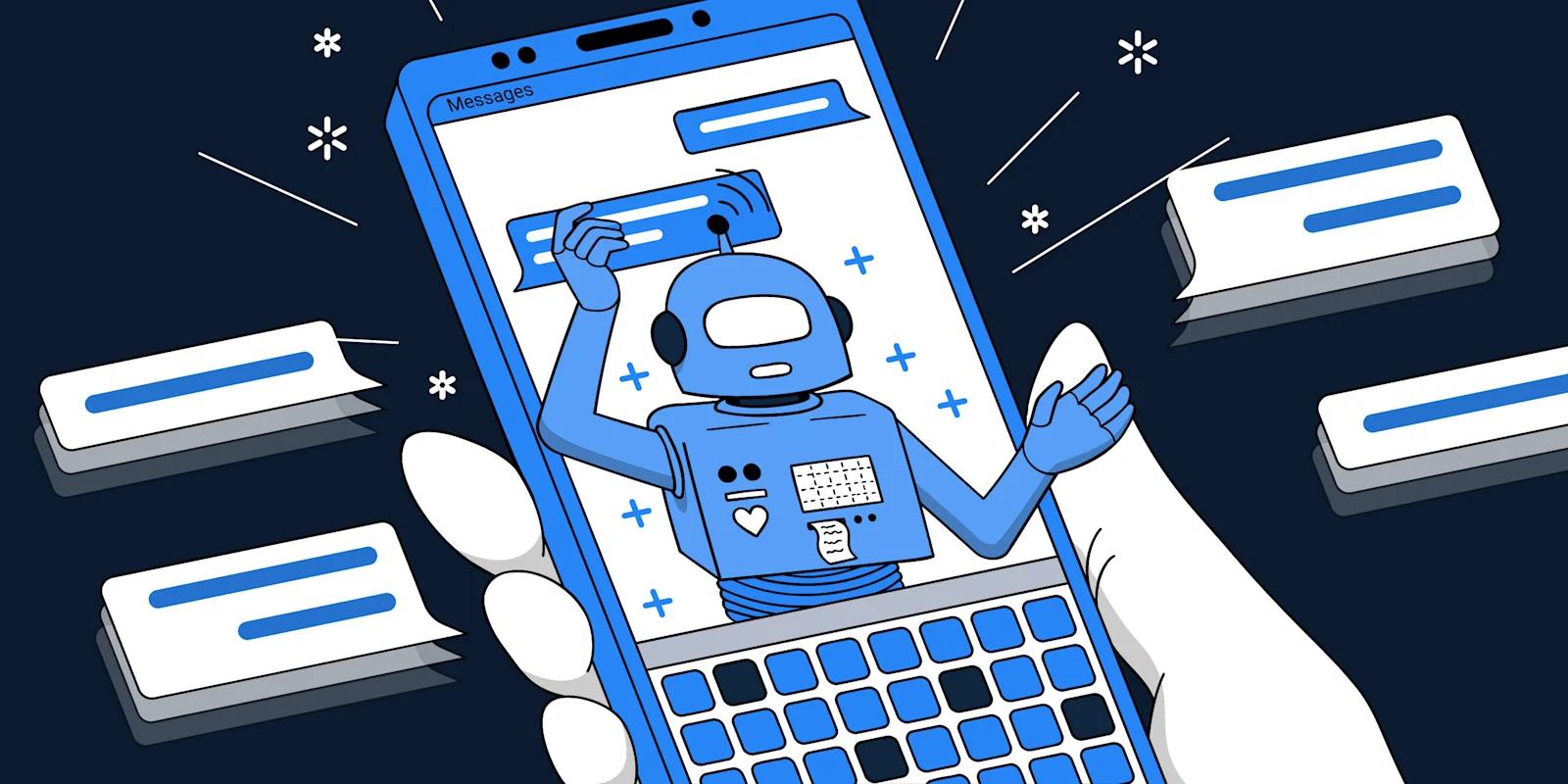It’s time to talk about Conversational Marketing. I know, I know - traditional, direct, digital, content, inbound, product, account-based, the list goes on and on. But it’s time to start thinking about conversational marketing and break down how it’s more than just chatbots.
Marketing is magic and the constantly evolving task of a magician is to keep the illusion alive for the audience. Conversational marketing is your best tool to ensure the show does go on.
Your audience is getting smarter and more aware of your tactics. It’s time to set the smoke and mirrors aside and have an honest conversation with your audience wherever they are engaging with your brand.
What is Conversational Marketing?
Conversational marketing is exactly what you think it is - a method of engaging with your website visitors through dialogue-driven activities.
Marketing is done via conversation. These conversations are meant to build trust with visitors that eventually will be handed off to your Sales team with enough information to get these prospects into the pipeline.
It’s a style of inbound marketing that puts focus on all the interactions with the consumer, making the buying experience an unforgettable one.
As shown in the image above by Drift, the traditional funnel contains endless hoops of back-and-forth and tons of “did you get my email?” messages.
If your team is experiencing accelerated growth, then you don’t have time for this anymore.
To add more color, conversational marketing is ideally executed using a unified marketing and sales platform that can align internal teams while ensuring a smooth customer journey through the funnel.
Building a Winning Conversational Marketing Strategy
The goal of conversational marketing is to understand and communicate with your customers in the way they want. A typical solution is made up of the following elements:
1. Start the conversation
The first message must entice visitors to click. This is the only element that you have control over and the most important one. If visitors aren’t interested in clicking, then you must find a way to drive action fast!
2. Map the conversation to searcher intent
Once website visitors start the conversation, your goal is to enter a short conversation to understand, qualify, and ultimately meet their needs. In the end, you should know whether the customer:
- Is looking for customer support
- Is looking for sales assistance
- Is interested in making a transaction.
But it’s not that simple.
We also want visitors to feel like they're taking part in a conversation in real-time, and make them feel confident enough to continue the conversation with a member of the sales team or make a purchase.
3. Let sales take the wheel
While helping visitors resolve issues is your priority, there should be clear conversation paths throughout your conversational marketing strategy.
If visitors aren’t ready to make a purchase, then maybe they will be put in contact with a member of your sales team, download a PDF, or subscribe to your newsletter.
One conversation has led to another, and the best-case scenario is your visitor is interested in continuing to speak with you.
On the backend of your content management system or conversational marketing tool, your sales team will document the visitor's questions, qualifications, and needs for a quick follow-up.
Conversational marketing gives your sales team mission-critical information about prospective customers and presents a more holistic view of your customers.
Conversational marketing is a powerful tool.
ThoughtSpot saw 10x more sales conversations, 70% more MQLs, and 64% more meetings booked by using conversational marketing.
This statistic alone may not be enough to get you to care about this inbound marketing tactic, but it should be enough to get you to continue reading.
Here's another one. Zero Motorcycles gained 30% more leads using Conversational Marketing - but if you’re not familiar with the capabilities of marketing technology in general, check out our latest post.
Why Should We Care About Conversational Marketing?
Conversational marketing gives customers a low-friction opportunity to engage with your brand.
This means conversations will occur when the customer prefers, which is okay. Our job as marketers is to be available when their desire to engage arises.
This is an important concept to understand before moving on. Conversational marketing is designed around the needs of the customer and not the needs of your business.
Customer Experience is Shifting in the Digital Age
Customers expect more, and as organizations, we have to deliver.
The traditional buying experience of landing on a website with no true source for conversation no longer flies in the Digital Age.
Visitors want options that work for them, and conversational marketing is a natural response. Without conversational marketing, your website is a storefront with products and services that no human can speak to.
Implementing conversational marketing strategies across your website ensures visitors are greeted, opening the possibility of guiding them through the buyer’s journey. If for nothing more, your business can get their contact information to continue the relationship in the future.
Conversational Marketing Opens the Door for Opportunity
Conversational marketing gets you valuable insights about your customers and builds relationships.
All of your visitors come to your website for a reason. When they engage with your conversational marketing strategy, they’ll tell you, in their own words, what they’re looking for.
Capturing this information from website visitors puts you at an advantage because now you know what they want - you’re no longer playing the guessing game using website traffic metrics.
Success starts with building the right conversational marketing strategy
Before getting prospective customers on a call with a human, engage the customer with answers, examples, and other relevant information that ties with their inquiry.
Help them out as much as you can in real-time before turning them over to a human.
This strategy instills trust in your brand, and the visitor is feeling confident heading into a conversation with someone who understands their pain points.
That someone is your sales rep, who now has valuable, qualifying information that can turn a conversation into a long-lasting customer relationship.
Conversational Marketing is More than Chatbot Marketing
The first thing that comes to mind when you think about conversational marketing is chatbots, and rightfully so.
With the global chatbot market estimated at $431 million in 2020, it is almost impossible to find an argument against adopting these new customer service initiatives that reduce operating costs. However, a chatbot strategy isn’t the only way to execute conversational marketing.
Have you ever received random messages from a number that reads 888-222 (or something similar) and you had no idea who it was?
That’s short message service (SMS) marketing - and while you might find it annoying, some marketing teams have found huge success qualifying leads through SMS marketing.
Put simply, SMS marketing allows businesses to send text messages directly to customers via text. With open rates as high as 98%, it’s obvious that customers are fond of receiving text message offers, promo codes, and news on upcoming deals through text messages.
A few reasons why companies opt to use SMS include:
- Lightning-fast delivery
- Higher open rates
- Higher response rates
How to Get Started with Conversational Marketing
Looking to get started and don’t know where to begin? I’ll walk you through simple conversational marketing examples and templates that you can deploy using SMS or a bot like HubSpot’s chatbot.
3 Steps to Better Customer Experience with Conversational Marketing
To get started, you must find a way to improve the customer experience. Using Drift’s Conversational Framework is perfect for this.
1. Engage
The first step is to allow visitors to start a conversation to create a more personalized experience. Forcing them to fill out a form can still land you leads, but it’s an approach that visitors experience constantly.
2. Understand
Understand the pain points of your visitors in real-time. When visitors engage, ask common questions that pertain to your product or service to discover their needs. Questions that are typically addressed during kick-off or qualifying calls are a good place to start!
3. Recommend
Finally, the closing stage is where you guide and suggest. With new information from the previous steps, human-to-human interaction can now take place with the goal of guiding them to the right resource.
Conversational Marketing Examples
Now that we've shown you a simple framework, let's look at a few examples.
1. Domino's SMS Messaging Tool
Domino’s introduced Domino's AnyWare to let customers order pizza anywhere through SMS marketing. Send the pizza emoji on Slack, Facebook Messenger, Twitter, or through text to start your order!
What’s the goal? To save customers time and simplify the conversation. By removing the need to dial in or order online, ordering pizza has never been so simple with SMS marketing.
2. Webstacks' HubSpot Chatbot
Using Drift’s playbook as a guide, the first thing we wanted to do was immediately engage with our visitors. Instead of the standard, “Hi, how can we help?”, we started with a phrase sure to grab their attention: “Psst, want to know a secret? 🤫”
Next, we wanted to understand how we could help our website visitors achieve their goals. To ensure goal completion, we built our chatbot to offer a personalized user experience with zero dead ends. Once the visitor engages, they will be guided to the right resource based on their inquiry.
For example, if someone selects ‘I need help’, a list of our core services appears. If none of these options are fitting, then the visitor can select ‘Something else’ and share with us why they engaged.
We’re receiving lead qualifying information in exchange for a conversation that offers visitors answers on the fly. The goal of our HubSpot chatbot is to connect visitors with a human or schedule an initial meeting.
In the future, we will introduce more complex interactions that will…on second thought...how about we keep those advanced conversational marketing strategies for another blog?
Add Conversational Marketing to your To-Do List
SMS marketing, chatbots, and messengers are channels your brand should take advantage of when implementing a conversational marketing strategy.
Who knows, you may be missing out on promising new relationships without adding this approach to your marketing strategy.
Until next time, we wish you all the conversations that will yield a consistent lead flow.




